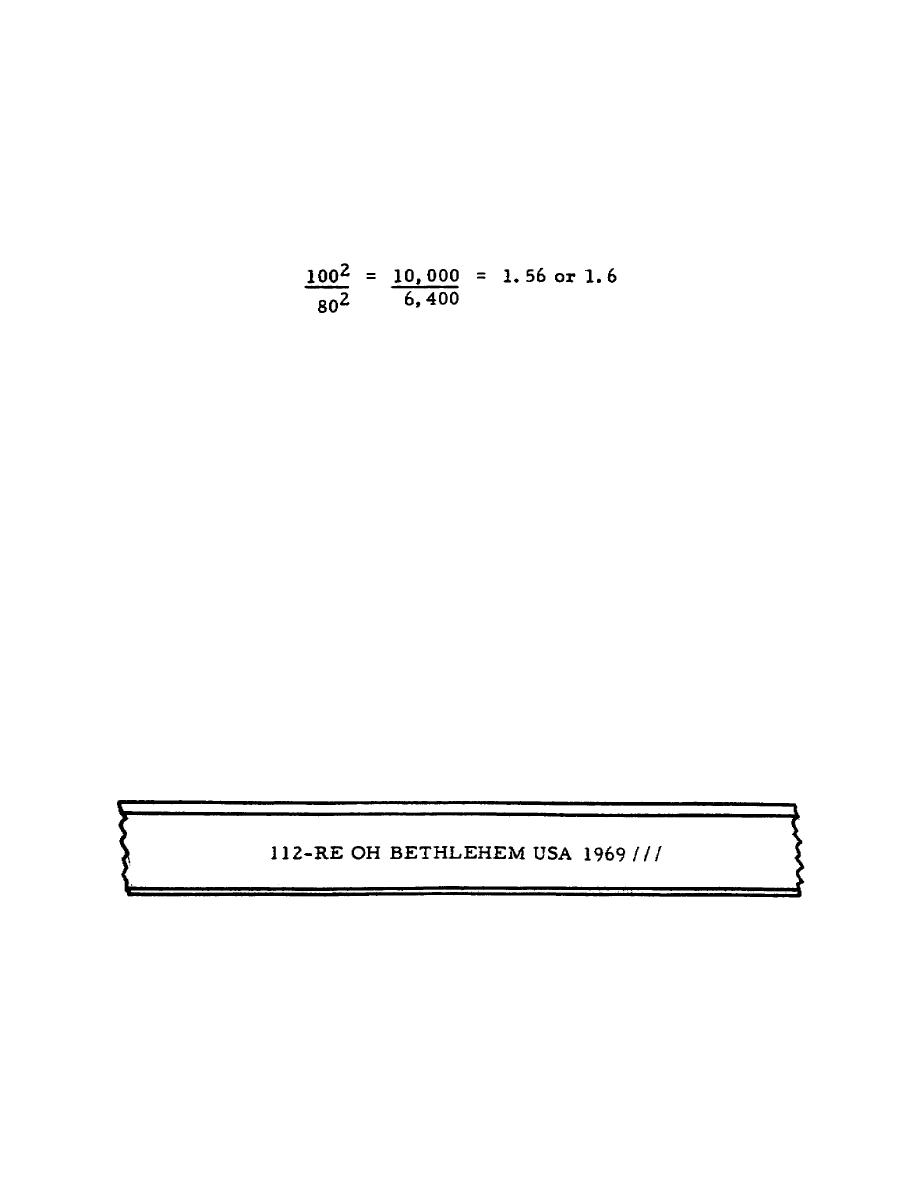
similar in shape, we are able to draw several conclusions concerning their stiffness without going
into the true theory of the concept. The first conclusion is that for rails of similar shape, the one
with the greater height is stiffer. Secondly, since they are made of similar material, their weight
is proportional to their cross-sectional area. It is roughly true that rails vary in stiffness in direct
proportion to the square of their weight. Suppose you are comparing 100-and 80-pound rails.
Your equation would be--
Therefore, the 100-pound rail is 1.6 times stiffer than the 80-pound.
3.7.
SECTIONS
The several different types of rail sections in use vary in their capabilities and
characteristics. The subparagraphs following describe several types of rail sections; additional
data on them are given in table I.
The first standard rail sections were developed by the American Society of Civil
Engineers and are known as ASCE sections. Later the American Railway Association (ARA)
and the American Railway Engineering Association, jointly, improved on the designs with two
series of sections, RA-A and RA-B. The A series was meant for use in high-speed territory;
notice its height and thin head. The B series was designed for use in heavy curvature, grade, and
tonnage districts; notice its narrow, deep head for long rail life. Still later the American Railway
Engineering Association alone assumed the task of determining proper rail sections. The heavy
rails they developed became known as RE sections.
3.8.
MARKINGS
The story of a rail's manufacture is branded and stamped on its web. For instance, you
might find the following marking branded on a rail:
44


 Previous Page
Previous Page
